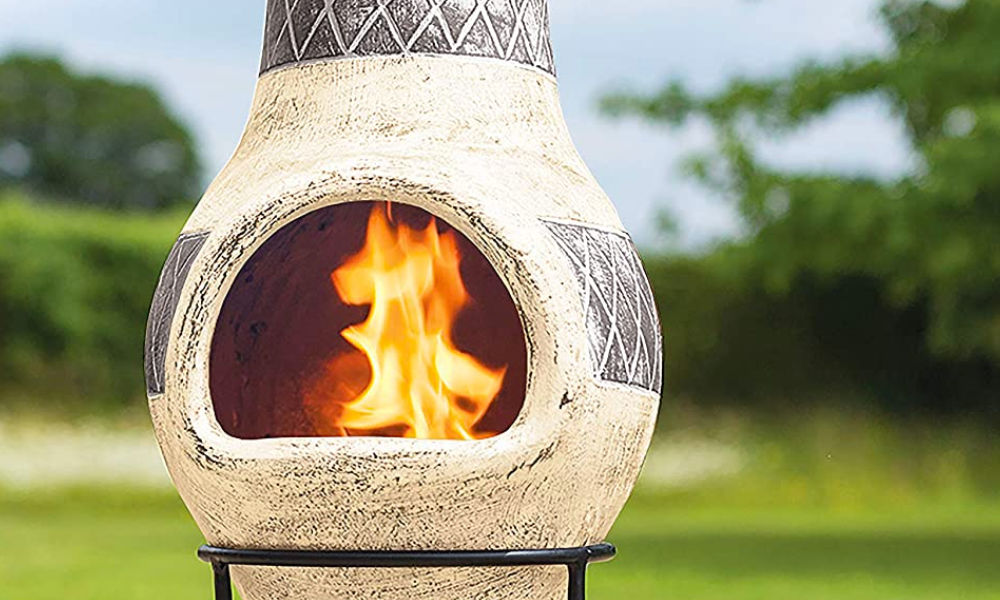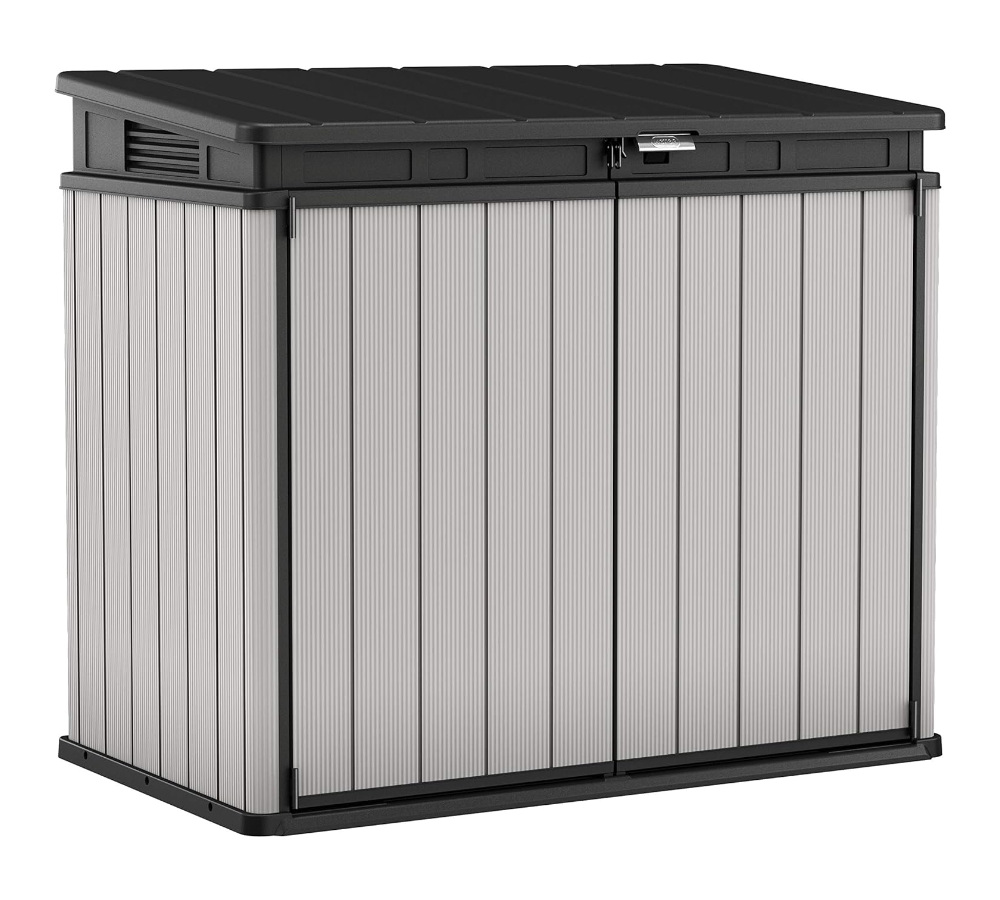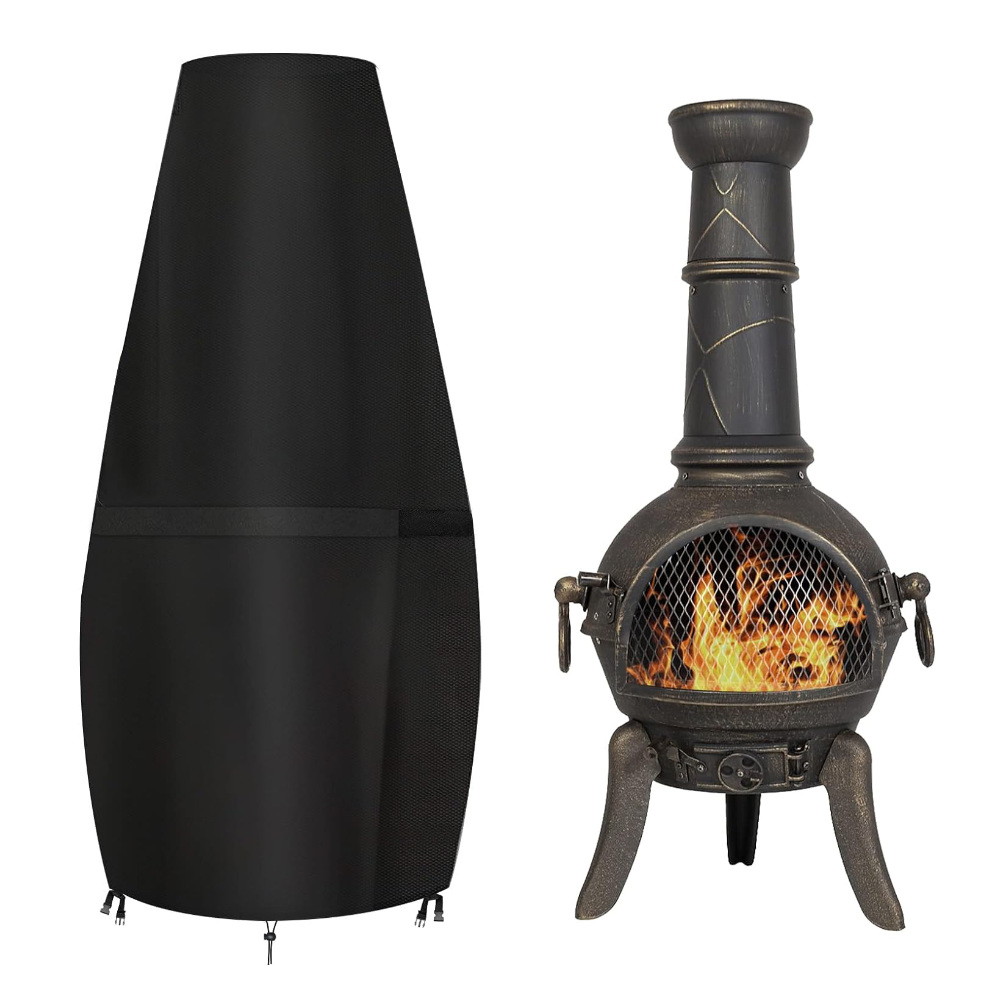Affiliate Disclosure: As an Amazon Associate, we earn from qualifying purchases.
Chiminea’s add warmth and ambiance to our outdoor spaces. However, when winter arrives, it’s essential to take steps to protect your chiminea from the harsh elements to ensure it remains in excellent condition.
How to Protect a Chiminea in Winter
In this guide, we’ll explore how to protect a chiminea in winter, with special attention to the differences between clay and metal chiminea’s.
Cleaning Your Chiminea
Before winter sets in, start by thoroughly cleaning your chiminea. This is essential for both clay and metal chiminea’s.
Remove all ash and debris from previous fires. Cleaning metal chiminea’s often involves using a wire brush to remove rust and loose paint, while clay chimineas need a gentle hand, as they can be more delicate.
Inspecting for Damage
Carefully examine your chiminea for any cracks or rust. These can worsen during winter, causing irreparable damage if left unaddressed. For metal chimineas, rust can be sanded down and treated with heat-resistant paint. You can find out more in our How to Get Rust Off a Cast Iron Chiminea.
For clay chimineas, cracks should be sealed with high-temperature mortar. You can find out more about how to repair a damaged clay chiminea in our article How to Repair a Clay Chiminea.
Choosing the Right Storage Location
You have two choices when choosing where to store your chiminea. You can either store it outdoors or inside.
The best option will normally be to stope it inside. This can be done by putting your chiminea in a shed, garage or plastic storage shed. Storing your chiminea inside will allow you to wrap it up more and help to prevent exposure to damp and freezing conditions which can easily crash clay chiminea’s.
If you don’t have a shed or need some extra external storage, take a look at the Keter Store it Out range of plastic storage sheds. They are tall enough to fit most chiminea’s and will give you space to keep your chiminea dry and warm during winter months.
Storing a chiminea outside is slightly more difficult but at the end of the day there are a number of steps you can take to help keep it safe.
Covering Your Chiminea
One crucial aspect of winter chiminea care is protecting it from rain and snow. Both clay and metal chimineas benefit from the use of a chiminea cover.
These covers shield your chiminea from moisture and reduce the risk of damage. When covering a clay chiminea, be especially careful to ensure it’s completely dry before putting on the cover, as trapped moisture can cause cracks.
How to move a chiminea
If you decide to put your chiminea inside then you’re probably going to have to move it.
Moving a chiminea can be a bit challenging due to their weight and sometimes delicate construction. It’s essential to move a chiminea carefully to avoid damage and ensure safety.
Tools and Materials You’ll Need:
- Assistance: Enlist the help of a friend or family member. Chimineas can be heavy and awkward to move alone.
- Gloves: Wear heavy-duty gloves to protect your hands and provide a better grip.
- Wheelbarrow or Dolly: If you have one available, a wheelbarrow or dolly can make the task much easier.
Step 1: Prepare the Chiminea
Ensure the chiminea is completely cooled down. Do not attempt to move it immediately after a fire.
Empty the ashes and unburned wood from the chiminea. This will reduce the weight and make it easier to handle.
Step 2: Assess the Chiminea’s Material
Determine whether your chiminea is made of clay or metal. This will affect how you should handle it.
Clay chiminea’s are fragile and can crack easily, so handle them with care. Gently clean the chiminea to remove any loose debris.
Metal chimineas are sturdier but can still be heavy. Check for any rust or damage and make any necessary repairs before moving.
Step 3: Positioning for Lifting
Choose a stable and level path for moving the chiminea. Avoid rough terrain or steep slopes.
Position the chiminea near the edge of the surface (patio, garden, etc.) for easier lifting and less distance to travel.
Step 4: Lift the Chiminea
With your helper, squat down and position yourselves on either side of the chiminea.
Bend at the knees, keeping your back straight, and lift the chiminea together. Use your legs, not your back, to do the lifting.
Lift with caution, and take your time to avoid straining yourself or dropping the chiminea.
Step 5: Transport the Chiminea
For Clay Chimineas:
If you have a wheelbarrow or dolly, carefully place the clay chiminea onto it. Secure it in place. If you don’t have these tools, move slowly and steadily, making sure to support the chiminea from the bottom. Take breaks if needed.
For Metal Chimineas:
Metal chimineas are usually heavier and more durable. If you have a wheelbarrow or dolly, use it for easier transport. Otherwise, follow the same slow and steady approach as with clay chiminea’s.
Step 6: Re-positioning
Once you’ve moved the chiminea to its new location, gently set it down. Carefully inspect the chiminea for any damage that may have occurred during the move. Address any issues promptly.
Step 7: Final Placement
Position your chiminea in its new spot, ensuring it’s on a stable and level surface.
If you have a clay chiminea, allow it to acclimate to the new environment for a few days before using it to reduce the risk of cracks.
Moving a chiminea requires patience and teamwork. By following these steps and handling your chiminea with care, you can safely relocate it to your winter location.
Lighting and Using Your Chiminea in Winter
Safety should always be a top priority when using a chiminea, especially in winter. Make sure the area around your chiminea is clear of flammable materials, and keep a fire extinguisher nearby. Use long fireplace gloves to protect your hands from the cold when tending to the fire.
Once your chiminea is safely lit, it can provide a cozy and warm atmosphere on chilly winter evenings. Invite friends and family to gather around, sip hot drinks, and enjoy the crackling flames.
Winter Maintenance
Throughout the winter season, it’s essential to maintain your chiminea. Clean out ashes regularly, as the buildup can obstruct airflow and affect the quality of the fire. Use appropriate cleaning products for your chiminea material – high-temperature paint for metal and clay mortar for clay chiminea’s.
Periodically check for damage during the winter months. Address any issues promptly to prevent them from worsening. This includes sealing any new cracks that may have developed due to the temperature changes.
Finally
Protecting your chiminea in winter is essential for its longevity and continued enjoyment. By following these guidelines and paying attention to the unique needs of your clay or metal chiminea, you can ensure that it remains a focal point of warmth and comfort during the cold season.
Enjoy the beauty of your outdoor space, even when the temperatures drop, by taking good care of your chiminea.
Don’t forget, whether you leave your chiminea inside or outdoors, you’ll still need a good quality chiminea cover for the rest of the year. Make sure you get a good, thick, uv resistant cover for your clay or cast iron chiminea.



